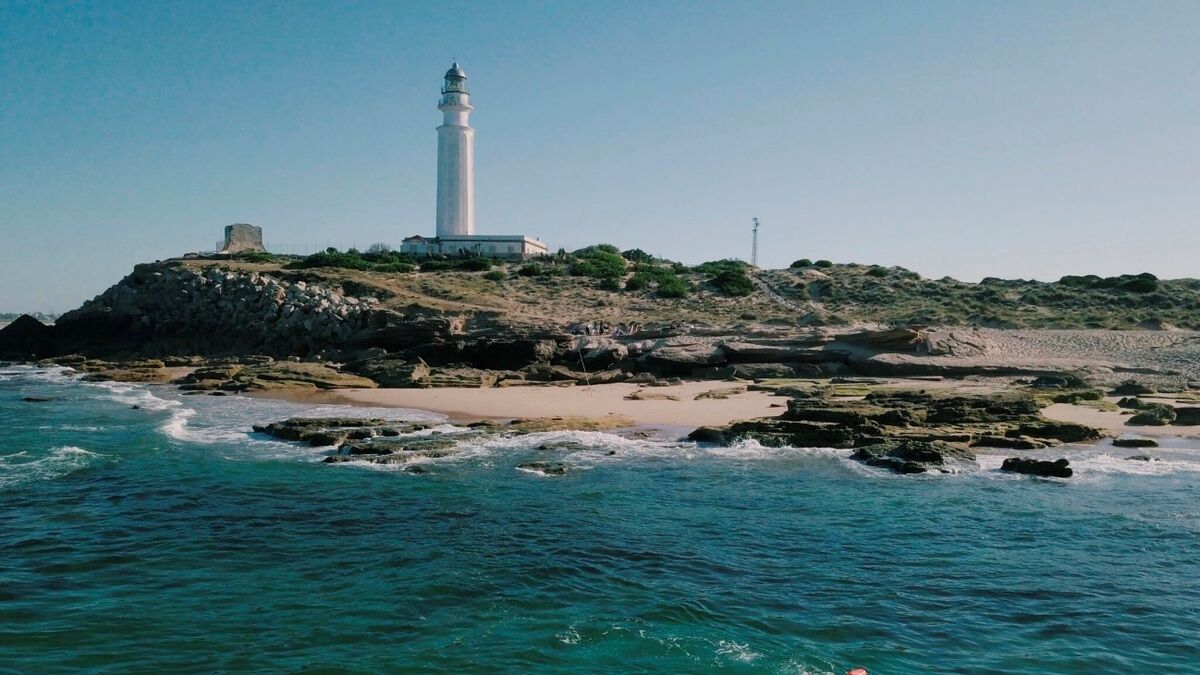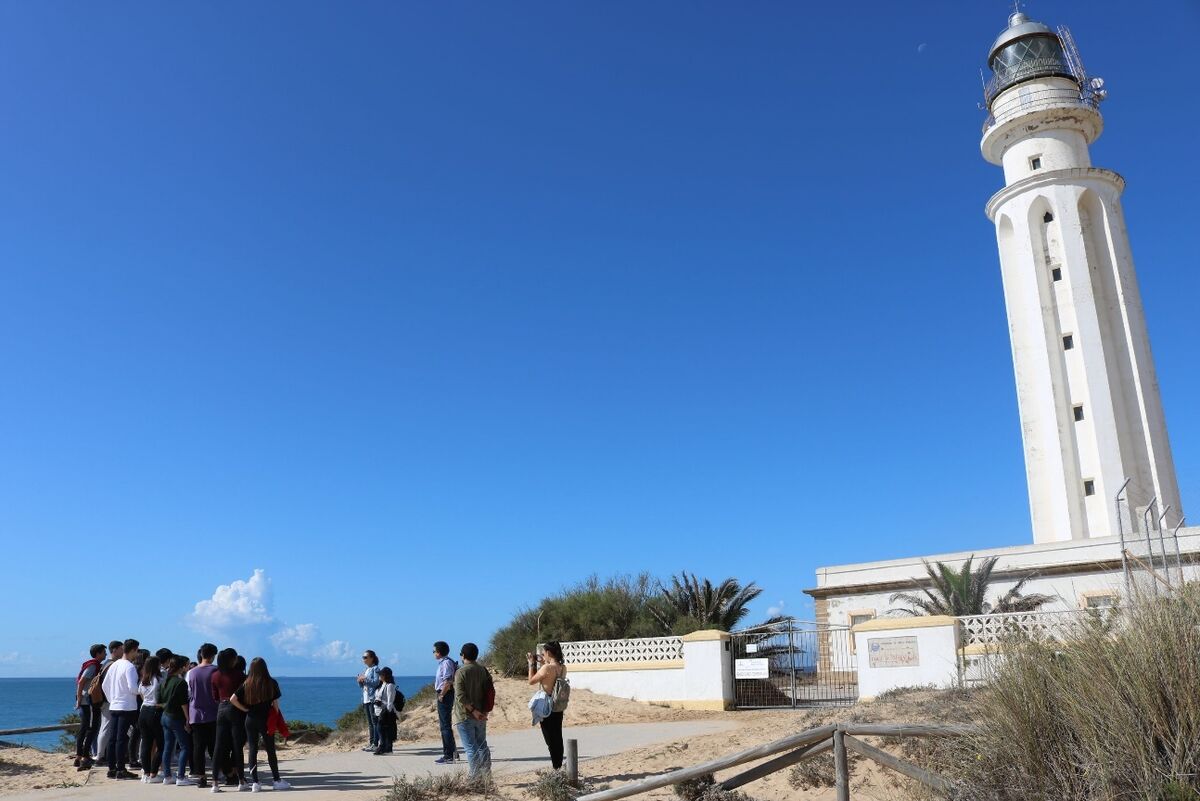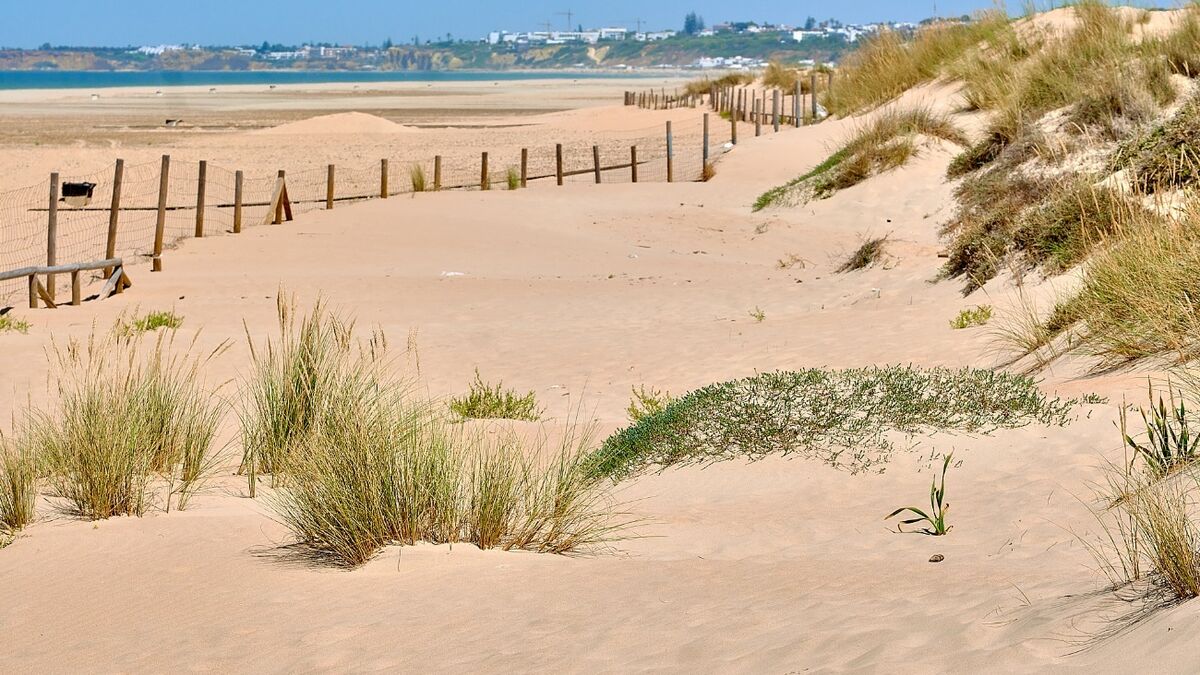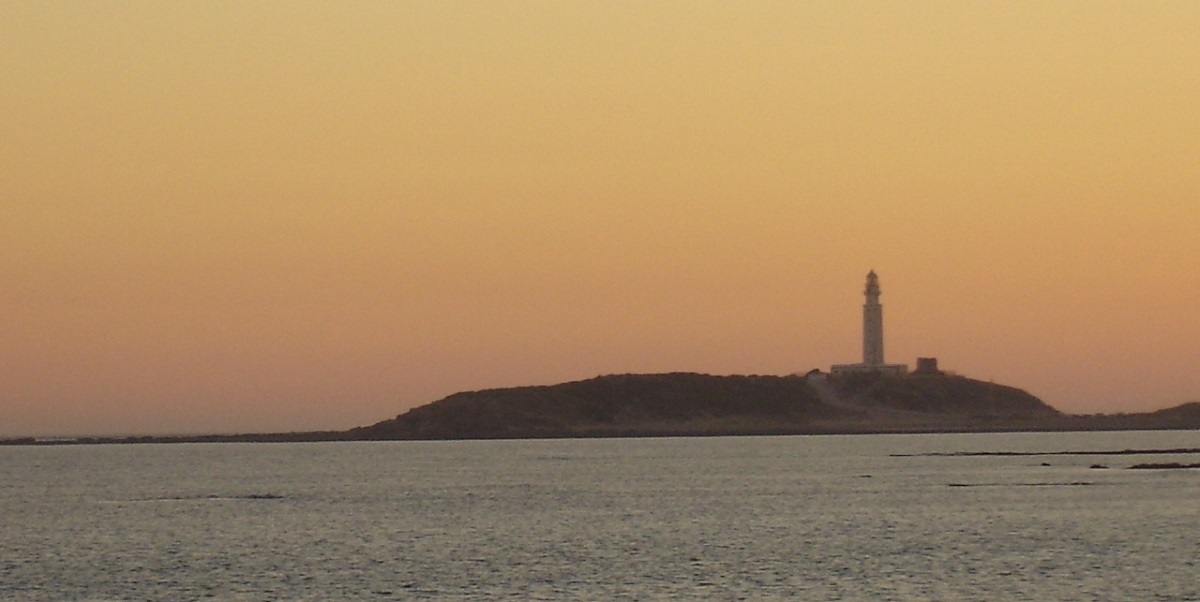
Located in the province of Cádiz, Spain, near the Caños de Meca and Zahora, there is a cape that is an integral part of the municipality of Barbate. Located at the northern end of the Strait of Gibraltar, this cape includes a small islet nestled between the inlets of Conil and Barbate. It is connected to the mainland by a double sand tombolo. Just 14 kilometers from this cape is the captivating and historically significant town of Conil de la Frontera, which has a rich maritime heritage deeply rooted in tuna fishing. Its about Cape Trafalgar.
In this article we are going to tell you everything you need to know about Cape Trafalgar, its characteristics, history, biodiversity and much more.
Key features

About 6.500 years ago, a remarkable event took place when the islet merged with the mainland. This event occurred due to the process of tides that transport sand from the sea, finally forming a sunken area in the heart of the islet. Over the years, The sea receded and the powerful Levante wind formed dune systems along the southern coast of the islet.
In 2001, Trafalgar Islet, along with the double sand tombolo and surrounding seabed, received official Natural Monument designation. Recognized for its geological importance, it received the name Tómbolo de Trafalgar. This declaration meant its inclusion in the Network of Protected Natural Spaces of Andalusia.
The phenomenon known as tombolo occurs when the mainland and an ancient island merge, forming a connection. This specific example of a tombolo is exemplified by the rock on which the Trafalgar lighthouse stands. The entirety of this region, encompassing Cape Trafalgar and its surrounding areas, is legally safeguarded as a place of significant community value. Since 2006 it has been recognized as a place of importance under the name of Punta de Trafalgar.
History of Cape Trafalgar

Cape Trafalgar occupies an important place in history as the site of the legendary naval clash known as the Battle of Trafalgar. This momentous event took place on October 21, 1805, pitting the Franco-Spanish fleet against the English forces. It stands as one of Spain's most tragic military disasters, leaving an indelible mark due to the immense loss of human life.
In the depths of Cape Trafalgar A multitude of untold stories are hidden, obscured by the passage of time. Centuries before the altercation occurred, the Romans had already established a fish cannery and nursery, contributing to the area's rich history. Furthermore, pirates of Berber origin had already devastated these coasts, which led Philip II to erect a watchtower in the 16th century as a means of reinforcing the defense.
The remains of an ancient Phoenician settlement and a Roman archaeological site, along with a venerable temple dedicated to Juno, attest to the historical importance of this place. Precisely in this place, full of centuries of stories, the Trafalgar lighthouse was erected in 1860, just fifty years after the aforementioned conflict.
During the summer, the cape experiences a large influx of tourists, making it a lively destination. However, the beauty of the area makes it an ideal place to visit all year round. Whether strolling along the path leading to the lighthouse or simply taking in the stunning views, this place offers a picturesque experience.
Cape Trafalgar Lighthouse

Since its creation in 1860, Cape Trafalgar Lighthouse has remained an imposing 34 meter high structure (with an elevation of 51 meters above sea level). This remarkable lighthouse, distinguished by its conical shape and immaculate white tower, It serves as a prized viewpoint along the coasts of Cádiz and Andalusia. For countless decades, she has guided seafarers through treacherous waters, navigating the dangerous currents that lurk near the Strait of Gibraltar. Next to the lighthouse stretches a vast expanse of fine sand that culminates in the picturesque town of Conil.
Biodiversity
In terms of flora, Cape Trafalgar is home to a notable diversity of plant species adapted to coastal conditions. Mediterranean scrub dominates the vegetation, with species such as mastic, broom, heather and rosemary. These plants are resistant to salinity and the strong winds characteristic of the area, creating a picturesque landscape of great ecological interest.
In terms of fauna, Cape Trafalgar is an important refuge for migratory birds, as well as resident species. During seasonal migrations, thousands of birds take advantage of this strategic point to rest and feed before continuing their journey. It is possible to spot seabirds such as seagulls, cormorants and terns, as well as birds of prey such as the peregrine falcon and booted eagle.
In the marine environment, the waters surrounding the cape are rich in biodiversity. Coral reefs and Posidonia meadows are essential habitats for numerous marine species, from small fish to large predators such as sharks and rays. In addition, Cape Trafalgar is known for being a spot for watching cetaceans, such as dolphins and whales, which find these waters a favorable place to feed and reproduce.
The biological diversity of Cape Trafalgar is not limited to the terrestrial and marine environment, but also includes a wide variety of microscopic organisms and other tiny beings that play key roles in local ecosystems. Scientific studies continue to reveal new species and understand the complex web of interactions that support life in this area.
As you can see, Cape Trafalgar is a very interesting tourist place to visit during the summer and the rest of the year. The ideal is to visit it when there are not so many people to enjoy it better. I hope that with this information you can learn more about Cape Trafalgar and its history.